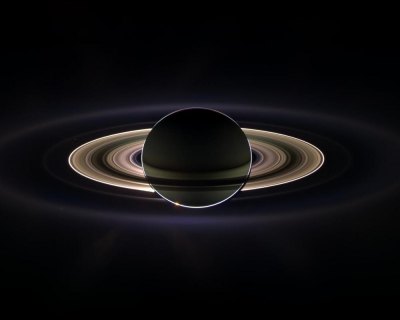Spacecraft's mission offers new look at Saturn

But a robotic spacecraft called Cassini has changed the way we think about Saturn. On June 30, the spacecraft celebrates its 10-year anniversary, according to NASA.
During the past decade, Cassini has made headlines, with its pictures frequently splattered across the front pages of newspapers. Each development has been examined and dissected. Saturn is still distant, but it isn't so unknowable anymore.
Here are five headline-making stories from the decade of Cassini exploration:
- Probe lands on a Saturn moon.
The Cassini spacecraft carried the European Space Agency’s Huygens probe, which landed on the Saturn moon Titan in 2005. During a two-and-a-half hour descent, scientists learned that Titan was similar to Earth before life evolved, with methane rain, erosion and drainage channels and dry lake beds, according to NASA. The probe also provided on-site measurements of atmospheric temperature.
- Titan gets more interesting.
In 2007, researchers using data from flybys revealed the moon to be an Earthlike world with rain, rivers, lakes and seas. Titan’s geologic processes are similar to those of Earth, NASA reports. “These processes generate methane rains, which build river channels and form lakes and seas containing liquid methane and ethane that don’t immediately evaporate.”
- Cassini offers new views of Saturn’s rings.
- There’s no hurricane like the hurricanes of Saturn.
-
Researchers discover active, icy plumes on another Saturn moon, Enceladus.
Scientists were so taken aback by the discovery of Enceladus' massive plume that they reshaped the mission to get another look. Earlier this year, scientists had more to report -- the possibility of an ocean beneath the surface.
Related:

